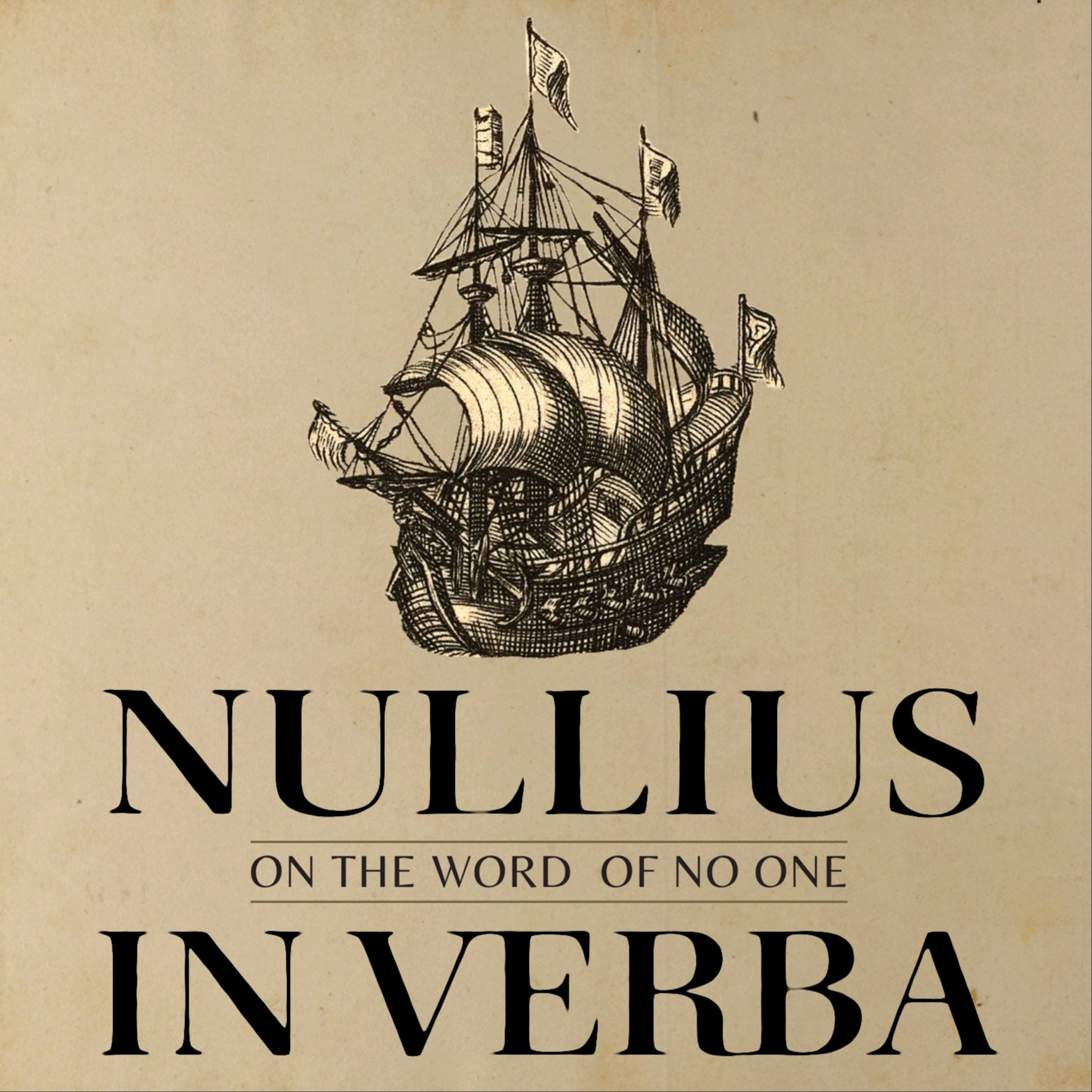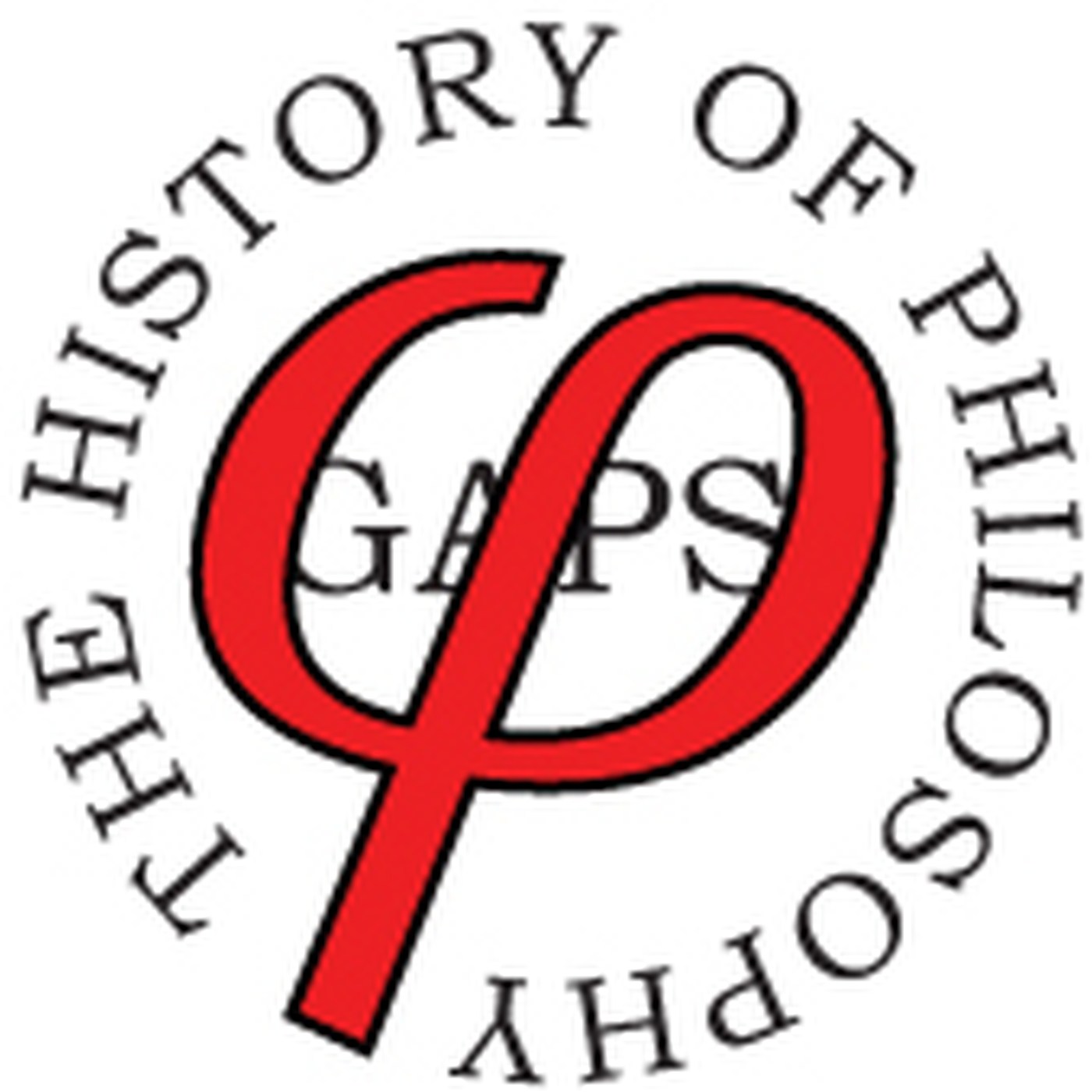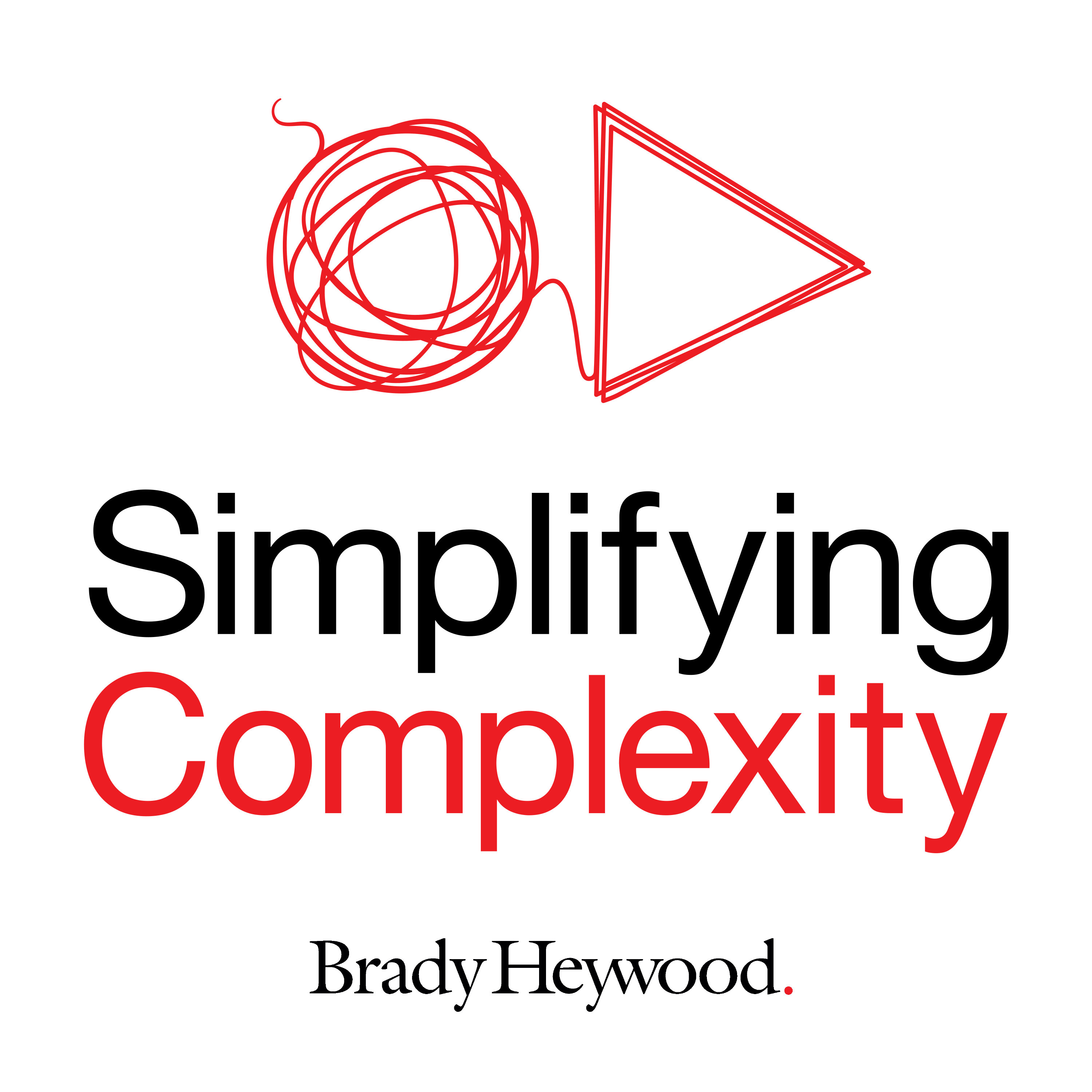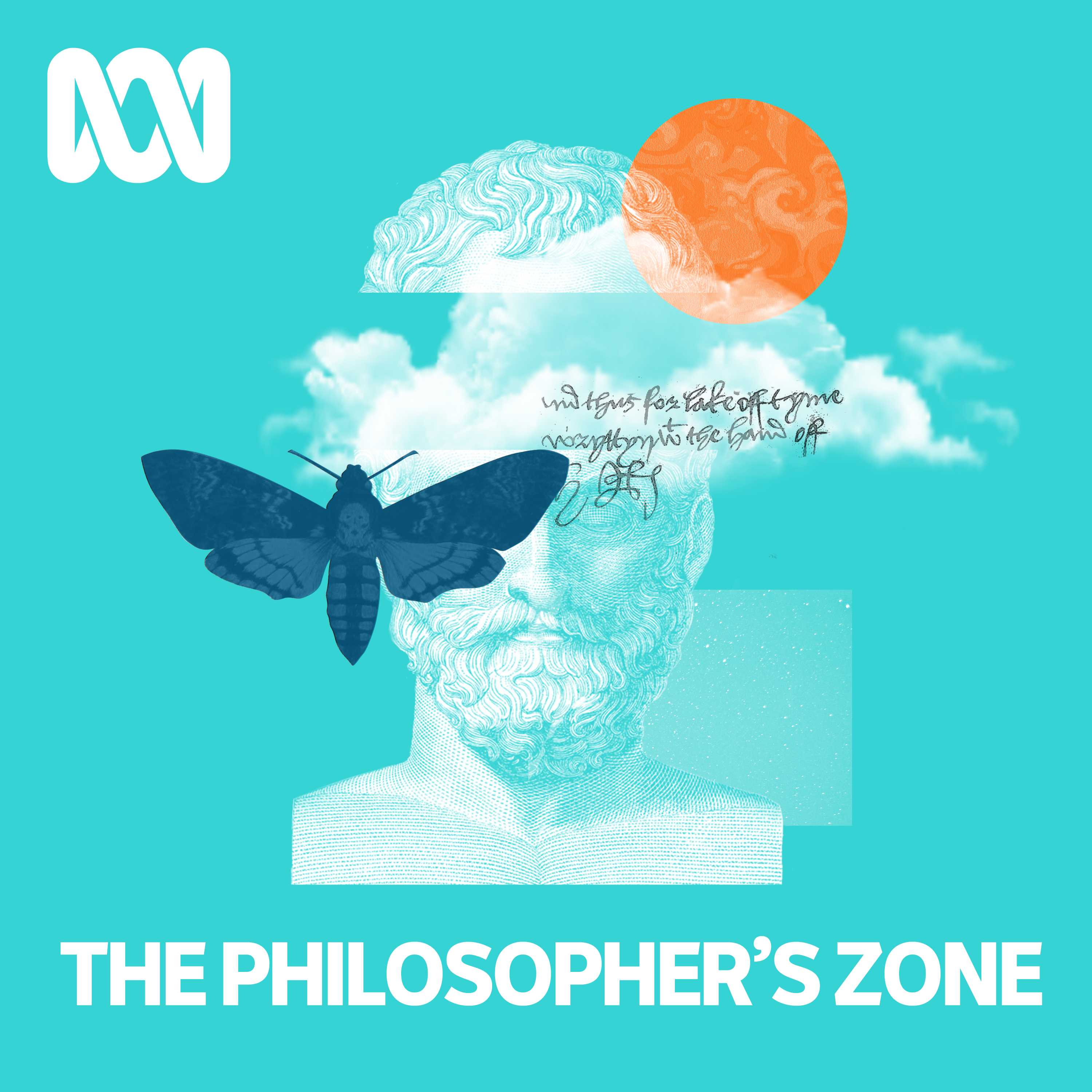
The HPS Podcast - Conversations from History, Philosophy and Social Studies of Science
Leading scholars in History, Philosophy and Social Studies of Science (HPS) introduce contemporary topics for a general audience. Developed by graduate students from the HPS program at the University of Melbourne.
Lead Hosts: Thomas Spiteri (2025) and Samara Greenwood (2023-2024).
Season Five is now here! Episodes released weekly. More information on the podcast can be found at hpsunimelb.org
The HPS Podcast - Conversations from History, Philosophy and Social Studies of Science
S2 Ep 4 - Duane Hamacher on 'Indigenous Science'
"Everything on the land is reflected in the sky. So if you want to learn about indigenous astronomy, You have to learn about everything."
This week we welcome Duane Hamacher to the HPS podcast as he discusses Indigenous science and its importance in the Australian context.
Duane is a professor of astronomy who focuses on Indigenous astronomy, its history, and its present role in our knowledge systems. He works with elders from Indigenous groups across the world to bring to light the history of astronomy in their culture, and how we can appreciate and learn from it today.
He discusses with us the importance of considering Indigenous knowledge systems, be they oral, dance, or art, and their validity amongst Western science, and the importance of not dismissing that which looks different from what we might have previously been taught. At the University of Melbourne, Duane teaches a course called Indigenous Astronomy, run through the physics department, which highlights for students that there is more than one way of knowing, the synergy which exists between different modes of knowing, and how this fits in with the rest of their schooling at the university. Indigenous and Western ways of knowing are not disparate ideas, but run in parallel.
A transcript of this episode can be found here: https://www.hpsunimelb.org/post/duane-hamacher-transcript-s2-e4
Some links related to this episode can be found below:
- Book - Disciplining the Savages: Savaging the Disciplines by Martin Nakata
- Book - The First Astronomers - How Indigenous Elders Read the Stars by Duane Hamacher
- Article - Stars that vary in brightness shine in the oral traditions of Aboriginal Australians (theconversation.com) by Duane Hamacher
- Book Chapter - Safeguarding Indigenous Sky Rights from Colonial Exploitation by Karlie Alinta Noon, Krystal De Napoli, Peter Swanton, Carla Guedes, Duane Hamacher
- Article - Dismantling the Divide Between Indigenous
Thanks for listening to The HPS Podcast. You can find more about us on our website, Bluesky, Instagram and Facebook feeds.
This podcast would not be possible without the support of School of Historical and Philosophical Studies at the University of Melbourne and the Hansen Little Public Humanities Grant scheme.
Music by ComaStudio.
Website HPS Podcast | hpsunimelb.org
Hi all. From the team here at the HPS podcast, we welcome you to another episode. I'm your host, Indigo Keel, and my co producer is Samara Greenwood.
Today, we welcome Duane Hamacher to the podcast. Duane specialises in Indigenous knowledge and ways of knowing and joins us today to talk about how it relates to science.
In Australia, our tendency to focus on Western ways of knowing can cause us to overlook the traditions of Aboriginal and Torres Strait Island people, even when they may be teaching us the same thing.
Indigenous knowledge provides insight into the land we live on and the skies above us. So, what is indigenous knowledge? What is its place in contemporary Australia, and what can we learn from it?
[00:00:00] Indigo Keel: Hi, Duane. Good to have you on the podcast today.
[00:00:50] Duane Hamacher: Thank you so much for having me.
[00:00:51] Indigo Keel: I'll start with the question that we always begin with, which is: what's your connection to HPS?
[00:00:56] Duane Hamacher: I work in the world of astronomy and culture, mostly with indigenous astronomy here in Australia.
To understand how cultures conceptualise understandings and knowledges about the stars, it's going to involve understanding the history and the philosophy of science itself. It's a great opportunity, I think, to bring in a really interdisciplinary approach.
My background is in astrophysics, but I work in the social sciences, even though I'm employed here in the School of Physics. It's a really exciting area where I get to, I guess, put on all my different hats, areas that I love working in.
With the history and philosophy of science in indigenous cultures, when it comes to indigenous star knowledge, everything's connected and everything's related. So understanding how traditional cultures in the past, in the present, have understood their place in the universe and how they've developed knowledge around the stars through these observations. How they apply that knowledge, how they conceptualize that, is a really fascinating topic and it ties to everything.
One of the things that elders will often talk about is how everything on the land is reflected in the sky. So, if you want to learn about astronomy in an aboriginal or indigenous context more broadly, you have to understand how everything is connected to what happens down here on the land. The positions of the stars, how they change, might tell you something important about seasonal change, about time, about maybe the behaviour of animals and plants. It can be seen as a time piece to help you understand longer term cycles in nature. You can map out your stories and traditions and laws in the stars. You can use the stars as a map, as a navigational aid. You can even use it as a memory space.
So, the exciting thing about the history and philosophy of science within this context is it's so interdisciplinary. There's almost no area that doesn't touch on at some point.
Indigo Keel: As someone who doesn't work in HPS but works in an adjacent discipline, what would you say is the value of HPS?
Duane Hamacher: In my work, indigenous cultures have not been given credit for having science as part of their knowledge base, as part of their knowledge systems. It's been seen as something that is a Western construct. Science is about Western society - Indigenous cultures didn't have science. And I've challenged that for a long time. That's been the body of my work and what we're doing in this space more broadly. And what I've learned from the communities and the elders is that they also see themselves as scientists.
Professor Martin Nakata, who wrote a phenomenal book called Disciplining the Savages: Savaging the Disciplines is all about the cultural interface between Western and Indigenous ways of knowing, and in particular, in a scientific context. In the world of HPS, understanding how science is embedded in these knowledges and how we can learn from these two worlds coming together is foundational to that work of the cultural interface. Not only in understanding how we can move forward in the space of history and philosophy of science by learning from indigenous knowledges, the work that I do challenges the history and philosophy of science.
What I mean by that is a lot of the discoveries that have been made in the history of science are usually credited to Western scientists. When in fact many of these discoveries were made by indigenous cultures a long time ago. I could give a great many examples, but just throwing a few out there. Variable stars are an example. Stars that change in brightness over time. Auroras that make sound. The prediction of eclipses. Observations of supernova.
All these different types of phenomena that are not recognized or credited to their original observers and contributors, because they encoded these knowledges in oral traditions and narratives and songs, which were just dismissed as myth and legend, they were considered part of the scientific canon.
So going through and showing that these cultures long ago had observed these phenomena, had predicted these phenomena, had understood them, at least in their own conceptual framework, really goes back and challenges what we think we knew about the discovery of these ideas. But also it's changing how we do research in these areas.
There's examples and astronomy and geosciences and biosciences, where traditional ways of knowing are guiding scientists and their practices and their research. So, elders and scientists are working together collaboratively and that's going to impact how we do science in the future. So that's really changing the philosophy of science, but also the future history of science.
How we see the history of science in 10 or 20 years is going to be very different to how we see it now.
[00:05:49] Indigo Keel: Do you have a topic today that you wanted to focus on more specifically?
[00:05:53] Duane Hamacher: The work that I do in indigenous astronomy is really exciting, and that's what I think would be the most relevant to talk about today.
Like I said before, there are so many great examples of this, and I think one that I'm going to talk about is variable stars. So variable stars are stars that change in brightness over time. And there's different types. Some are very slow changing stars; they might change by a small amount over a very long period of time. Some of them are very quick, like a supernova. It becomes extraordinarily bright for weeks to maybe even a month, and then just sort of gradually fades away to invisibility. And everything in between. This wild spectrum we have there.
Now, there are two general types of variable stars. Something about the internal structure of the star that makes a change in brightness or something external, like a pair of stars orbiting each other. When we look at the history of science, we see that for these stars, maybe like these pulsating red giant stars, they're credited with their variability being discovered by Herschel back in the 1840s, I think, from the Cape of Good Hope.
The idea is that he had noticed that, or at least he'd heard from other people, that some of the stars change in brightness. So, what he would do is he would keep notebooks, where he would simply look at a chunk of the sky, of a handful of the brighter stars, and write them down in order of the brightest to the faintest.
So, if you keep doing that over time and the stars aren't changing in brightness, that list is always going to be the same. But if one of them changes in brightness, then it's going to move around in that list.
He finally realized in 1840, after keeping records for a few years, he noticed a couple of the stars were changing in brightness. And one of them in particular was the star Betelgeuse in Orion. So, the history of science accredits the discovery of pulsating variable stars to Herschel. When around that time there were ethnographers recording knowledges from Aboriginal people around Australia. And particularly along the mouth of the Murray River, the Coorong, in South Australia, south of Adelaide.
There was this narrative about Waiyungari, the red man, who was this young initiate and he had to go through this period to prove himself physically, as well as mentally. That meant he had to be on his own for a period of time, a week, two weeks, something like that. He had to fast, he couldn't eat, couldn't wear any clothing, couldn't have any contact with anybody.
And he was covered in red ochre. So Waiyungari literally means red man. Well, he ended up breaking a sacred taboo, and was facing death is punishment. So, he tried to escape this by casting a spear into the Milky Way, where he pulled himself and two other women he was with up into the Milky Way.
He became a bright red star, and the two women were two stars on either side of him. He pulled up his canoe, which we can see is a big constellation in the Milky Way itself, with the celestial emu off to the west, which is a dark constellation. It's a silhouette of an emu that's traced up by the dark spaces between the stars that goes from the Southern Cross into Scorpius and the Milky Way.
The people talk about how Waiyungari, every few years, will get hotter and brighter. And this signifies to the people the importance of following traditional law. Early anthropologists thought, ‘well, it's a bright red object in the sky, it must be Mars’. But that doesn't make any sense. Because people say, if you look out at the sky after sunset, in the start of spring, these stars are going to be directly overhead. And, of course, Mars is a planet, it's a wanderer, it's always moving around in the sky. Yes, it's bright red. And yes, sometimes it'll be a bit brighter and a little bit fainter as it moves around the solar system. Sometimes it's further away, sometimes it's closer to us. Okay, that makes sense. But planets are wanderers, they're not going to be up in the same part of the sky every year.
When we go back and look at what these ethnographers had recorded in the past, and then we look at the actual traditions, it's clearly not talking about Mars, it's talking about Antares. Which is in the constellation Scorpius. Well, Scorpius is the canoe. And we see that in Australia and all around the South Pacific.
It's a very common idea of linking those particular stars with a canoe. He's the red star. The two stars on either side of him are the two women. And the celestial union is off to the west. And when you look up at the sky, in springtime, right now, after sunset, they're going to be straight overhead. So, it all fit together.
But what was exciting about that is talking about that star changing in brightness over time - because Antares does change in brightness over time, about every four, four and a half years it will change by, I think it's one and a half full magnitudes, which is definitely noticeable.
What's important about this is that everything in the world around us happens for a reason. With aboriginal people looking up at the stars, they see any kind of changes in the stars as being something important. It has meaning. It has agency. It has significance. Even though it wasn't used as a calendar, for example, I mean, that star was, but not as changing brightness, they had to give some kind of meaning to that observation, no matter how subtle it is. So, they used that, and by that star changing in brightness, it told people about the importance of following traditional law.
It was a great way to see that not only have aboriginal people had this capacity for a very long time to observe even the most subtle changes in the world around us, which they refer to as reading the stars, observing and interpreting the changes in positions and properties of the stars, that they'd observe this phenomenon that has a cycle of four, four and a half years incorporated.
And that actually shows that they had observed variable stars and knew about them long before Herschel ever did.
[00:11:36] Indigo Keel: Beautiful story.
When we talk about indigenous ways of knowing and indigenous science, why is it so important to consider these?
[00:11:44] Duane Hamacher: A lot of Aboriginal and Torres Strait Islander elders talk about how they are a people of culture. They are also people of science, and they have huge bodies of knowledge that are based around observations and experimentation and understandings of the world around us, how it works, how it functions. That is science. Whether it's an indigenous context or a western context, it doesn't really matter. It's about understanding the ways in which they link together, how they work, how they function.
In a place like Australia, a lot of the colonial ways of managing country, of understanding how these systems work together, are pretty poor. They're not done very well. We can see example after example of how colonial ways of trying to manage countries led to its destruction and demise. So going back and learning from the elders and the communities and collaborating with them as equals and learning from these bodies of knowledge they've been passing down for millennia, tens of millennia, is really critical for us doing science these days, because we need to work with those elders who've developed knowledge about the environment, who've lived through major climate changes, who've lived through destructive events like volcanic eruptions and earthquakes and meteorite impacts, who've gone through ice ages and the oceans rising and falling. They've gone through all these cycles numerous times.
How are we going to work our way forward, given climate change we're facing now, given all these challenges that we're facing, given that country is being destroyed, how are we going to work through that? We have to do that with indigenous knowledge as a guiding force.
[00:13:21] Indigo Keel: I was hoping you could talk a bit about what it's like to run an indigenous science subject in the University of Melbourne Science Department.
[00:13:28] Duane Hamacher: When I came to Melbourne Uni a few years ago, I came to work with the Faculty of Science and in particular the School of Physics about how we can begin to help integrate and develop indigenous ways of knowing into the curriculum, into the programs.
Of course, I work with a team of Aboriginal and Torres Strait Islander colleagues and First Nations colleagues from around the world about how to go about doing this. What we had decided for the School of Physics was to develop a stand-alone breadth subject, so all students could take it across the university, at the first year level, that was based on indigenous astronomy.
And the reason that it's so useful in this context is because, like I said before, everything on the land is reflected in the sky. So, if you want to learn about indigenous astronomy, you have to learn about everything else. Therefore, students studying almost any discipline can come in and find something useful to take away from that.
We do focus on the scientific layers of that knowledge because it is taught in the school of physics and it's about showcasing the science behind that and what we do and what we don't do is quite important to differentiate. We're not comparing indigenous knowledges to Western science. We're showing that a lot of what is credited to Western science was already known and developed by indigenous cultures long ago. And there's going to be synergies between those two areas.
So yes, it's important to understand how things work in both contexts and then to show the crossroads between them. So, this subject discusses a range of ideas. We look at the sun, the moon, planets, stars, meteors, comets, all these kinds of phenomenon, but also how they work together, how they're tied in with culture and history and philosophy.
We look at how they link in with the different sciences as well, so you learn a bit about ecology and geology and meteorology and chemistry. And we bring in a lot of First Nations guest lecturers from all around the world. We have Māori scholars, we have Lakota scholars, we have Aboriginal and Torres Strait Islander, we have Lanna elders from Northern Thailand. We bring in colleagues from around the world to share their different perspectives on this, so we can see this in a global context, not just here in Australia.
It's great being able to hold this in a physics department, because even though it isn't a physics subject in any traditional sense, we do incorporate a bit of physics and astronomy knowledge in that. I think there are students who said they didn't enrol in it because they thought it was going to be too much math. I'm like, ‘no, it's fine, it's not like that. It's not that kind of course’. But it is about showcasing the rich and complex layers of knowledge and the science behind that in a global context. I think it's one of the only physics departments in the world to have something like this.
[00:16:09] Indigo Keel: What is it that you want people to be able to take away from the work that you do?
[00:16:15] Duane Hamacher: I think what's important in this context for history and philosophy of science students is to recognize that there are a lot of different ways that knowledge can be passed down over time. And that seeing knowledge passed down through oral tradition, through stories and song and dance or even what we think of as art shouldn't be dismissed because it isn't written down in a structured language. We live in a society where everything is based on the written word. And if it isn't written down, it's hearsay.
I've even had papers I've tried to publish in the last few weeks, I get referee reports back saying, ‘Oh, well, these old traditions are just hearsay, you should take those out, you can't scientifically prove that’. And I'm like, ‘Oh, this is so frustrating’. That's not what this is about. This isn't just one person randomly saying something to someone else. These are structured bodies of knowledge that talk about the formation of landscape features.
So, I think it's important to understand that oral traditions are not just quote unquote ‘myth and legend’. That there are extremely important ways in which knowledge is taught to successive generations. Moving away from the idea of history as being a written history, ro the idea of history as being knowledge, as being passed down, whether it's written or whether it's oral or whether it's through some other material means like art or rock art or something. It's important that we recognize the ways in which that's done and that it is valid, it is important, and that it shouldn't just be dismissed as myth and legend. That you can find a huge amount of information and scientific knowledge in those bodies of orality, if we just consider what they are, and not toss the baby out with the bathwater.
[00:17:57] Indigo Keel: It was great having you on the podcast today, Duane.
Duane Hamacher: Thank you so much for having me on.
Indigo Keel: Thank you all for listening to the second season of the HPS podcast, where we discuss all things history, philosophy, and social studies of science. Our guest today was Dwayne Hamaker. We want to thank the School of Historical and Philosophical Studies at the University of Melbourne for their support.
To learn more, check out our website at www.hpsunimelb.org/the-hps-podcast. There, you can also find links to our blog, our social media, and show notes for today's topic. I'm Indigo Keel and my co producer is Samara Greenwood. We look forward to having you back next time.
Podcasts we love
Check out these other fine podcasts recommended by us, not an algorithm.

The P-Value Podcast
Rachael Brown
Let's Talk SciComm
Unimelb SciComm
History and Philosophy of the Language Sciences
James McElvenny
In Our Time: Science
BBC Radio 4
Time to Eat the Dogs
Michael Robinson: historian of science and exploration
Nullius in Verba
Smriti Mehta and Daniël Lakens
The Disappearing Spoon: a science history podcast with Sam Kean
Sam Kean, Bleav
History of Philosophy Without Any Gaps
Peter Adamson
Narrative Now
Narrative Now
On Humans
Ilari Mäkelä
